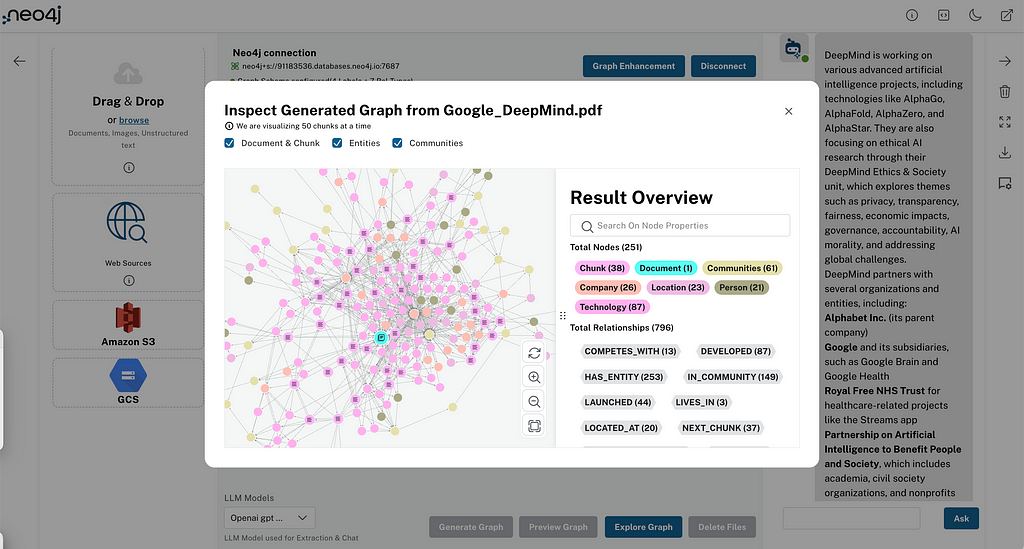Neo4j + Cassandra: Transferring Data from a Column Store to a Property Graph

Developer Relations Engineer
5 min read

Data Model Translation: A Challenge of Polyglot Persistence

Figure 1: Converting a column store data model into a property graph. Converting from one data model to another is often the first step of implementing polyglot persistence.
Polyglot persistence is all about taking advantage of the strengths of multiple database technologies to enhance your application. However, this comes at the expense of the added complexity of working with multiple databases. In order to take advantage of polyglot persistence, often the first task is to convert from one data model to another. For example, converting data opens in new tabfrom a document data model to a property graph model. Our goal is to make this process more simple for the developer. For this reason, we have been working on a prototype Neo4j-Cassandra data import tool.Neo4j + Cassandra: A Possible Use Case
Before looking at this tool, let’s examine why we would want to use Cassandra and Neo4j together. opens in new tabPreviously, we looked at using MongoDB and Neo4j together in the context of a product catalog use case. In that example, we leveraged Neo4j for generating personalized recommendations while using MongoDB’s strengths to search, filter and populate the view for our product catalog. What are the strengths of each database that we would want to leverage? Because of Cassandra’s masterless clustering model and reliance on eventual consistency, one of its strengths is the ability to handle a very high write throughput. For this reason, Cassandra is often used to store high volume data such as event logs, which don’t require opens in new tabACID guarantees like what is available with Neo4j. However, depending on how we want to analyze these event logs, we might run into trouble. As Cassandra does not have opens in new taba rich query language, it is advised to make the columns and column families optimized for reading the data. This can result in data duplication as you end up creating new tables with the same data, but optimized for different queries. What if we want to explore relationships in our data, perhaps for a opens in new tabfraud detection use case? We know that Neo4j is opens in new tabvery good at handling relationships, so it might make sense to bring some of our event log data into Neo4j to run some opens in new tabfraud detection Cypher queries. Fraud detection using event log data is just one possible use case that might make sense. Do you have a polyglot Neo4j + Cassandra use case in mind? If so opens in new tabwe’d love to hear from you about it!The Neo4j-Cassandra Data Import Tool – Alpha Version

Figure 2: The Neo4j Cassandra Data Import tool enables data export from Cassandra, translation to a property graph and inserting into Neo4j.
To help developers take advantage of polyglot persistence with Neo4j and Cassandra, we’ve put some effort into developing a command-line tool to enable transferring data from Cassandra to Neo4j. Special thanks to opens in new tabHanneli Tavante who helped develop this project with the use of her Cassandra expertise! Note that this is just an alpha prototype version that demonstrates some of the issues and a possible approach. opens in new tabCommunity feedback and opens in new tabcontributions are much appreciated.An Overview of the Tool
The Neo4j-Cassandra data import tool works by inspecting the Cassandra schema and allowing the user to define how the data should be mapped from Cassandra’s column-oriented data model into a Neo4j property graph:Step 1: Inspect Cassandra Schema and Config Data Mapping
The tool will inspect the Cassandra schema and generate a file with placeholders for specifying the configuration mapping. This initial version of the tool provides limited options for translation, the most notable limitation is that every table will be translated into a node in the graph model. See the opens in new tabdocumentation for more information.CREATE TABLE playlist.artists_by_first_letter: first_letter text: {} artist text: {} PRIMARY KEY (first_letter {}, artist {}) CREATE TABLE playlist.track_by_id: track_id uuid PRIMARY KEY: {} artist text: {} genre text: {} music_file text: {} track text: {} track_length_in_seconds int: {} NEO4J CREDENTIALS (url {}, user {}, password {})
Figure 3: The tool inspects the Cassandra schema of a specified keyspace. The user must then configure the mappings of the data model to specify how the property graph is created.







